May 30th Key Electronic Design Information Updates
Some important electronic component designs that can improve and enhance feature content are highlighted here as presented by May 2017 ECN Magazine.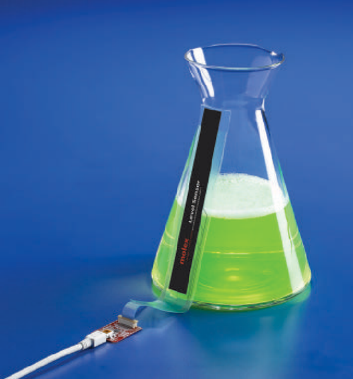
“Appliance manufacturers seeking better design strategies can now use capacitive fluid-level sensors to overcome these challenges. Capacitive sensors ensure precise fluid-level measurements with greater accuracy and lower set-up costs, utilizing customized end-to-end solutions and easy-to-install calibration software. …….
A single capacitive fluid-level sensor may be used as a point sensor indicating the presence or absence of fluid at a given level on a tank……
Capacitive fluid-level sensors can be connected to home systems via the Internet of Things (IoT) to transmit fuel tank level to the owner……”.
ECN May 17.
Capacitive touch-based sensors typically are built around conductive Indium Tin Oxide (ITO), with its limitations. So, alternatives like conductive polymers are being investigated. Chemical name for this alternative is Poly (3, 4-ethylenedioxythiophene).
“PEDOT is emerging as a promising material offering excellent electrochemical, thermal, and solution processing properties 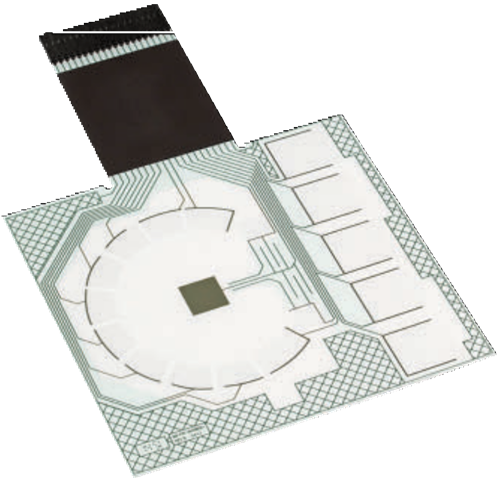 ideal for capacitive switch design. Colorless and water-soluble, this polymer mixture is generally applied as a dispersion of gelled particles suspended in water. The conductive switch is formed by screen printing a layer of the dispersion over the surface of the substrate and subsequently drying out the water by heat. The PEDOT dispersion can be coated on a variety of molded or flexible substrates including PET, PC, PMMA, glass, or other material.
ideal for capacitive switch design. Colorless and water-soluble, this polymer mixture is generally applied as a dispersion of gelled particles suspended in water. The conductive switch is formed by screen printing a layer of the dispersion over the surface of the substrate and subsequently drying out the water by heat. The PEDOT dispersion can be coated on a variety of molded or flexible substrates including PET, PC, PMMA, glass, or other material.
PEDOT mixtures have good adhesion qualities and are known for their high chemical stability, optical transparency, and electrical conductivity. Specially derived formulations have been developed using this compound to meet highly demanding optical applications, including backlit capacitive keys, sliders, and rotary wheel inputs. The technology has been deployed in robust automotive applications, typically behind a plastic bezel. As a conductive ink for backlit capacitive switches, PEDOT allows low-profile, user-friendly interfaces to be made at lower cost. PEDOT circuits are transparent and provide excellent flexibility (they can be easily bent). They do not require soldering (hence lower cost of application) and provide the low profile of a flexible circuit. The versatility of the PEDOT application also enables patterned conductive structures for sophisticated touch panels.
A fully- qualified PEDOT-based capacitive solution will deliver measurable cost savings over standard ITO substrates.
ECN May 17.
Under the trade name SEMICOSIL® 961 TC, which offers thermal conductivity of 2.0 W/mK, WACKER expands its thermally conductive silicone portfolio by introducing a new gap filler material for electronics and electrical device applications. The constantly increasing demand for heat dissipation between two substrates with high tolerances requires a thermally conductive gap filler material which is easy and cost effective to process, durable and effectively protects functionality.
SEMICOSIL® 961 TC is a highly filled, two-part silicone rubber 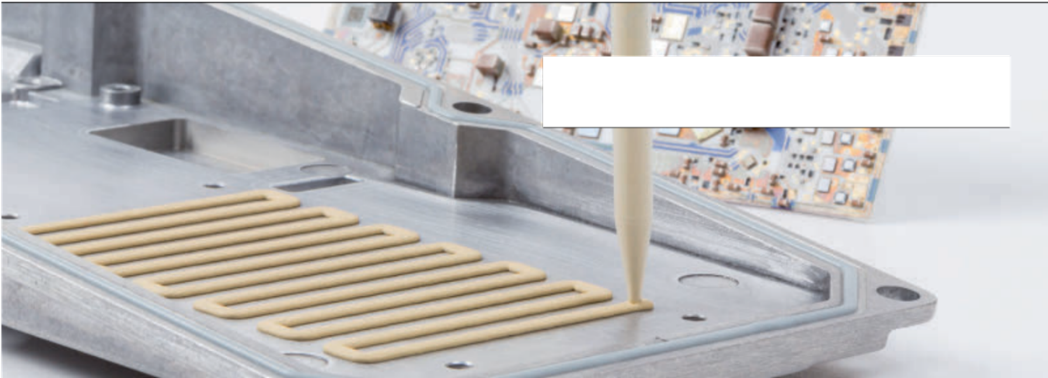 that cures at room temperature via a platinum-catalyzed addition reaction to form a soft silicone elastomer. The cured rubber achieves a thermal conductivity of two watts per meter kelvin (2.0 W/mK) and, at the same time, is electrically insulating.
that cures at room temperature via a platinum-catalyzed addition reaction to form a soft silicone elastomer. The cured rubber achieves a thermal conductivity of two watts per meter kelvin (2.0 W/mK) and, at the same time, is electrically insulating.
Notable Attributes:
- Cures at room temperature or faster at elevated temperatures
- Faster cycle times
- Low volatile content (<350 ppm)
- UL 94 V-0 rating (WACKER test result)
- Constant properties between -50 °C and
- +180 °C after cured
- Electrically insulative
- Very good vibration dampening
- High thermal and thermal-shock resistance
- Improved service life of mixing and metering equipment due to low abrasion
For further information contact WACKER Technical Service Manager through www.wacker.com/semicosil.
Film-Insert-Molded-OLED (FIM-O) a publicity funded joint project researching integration of organic electronics in the form of OLEDs into 3D-formed and film-insert-molded plastic components.
OLED gets front-injected using the FIM process and a decorative 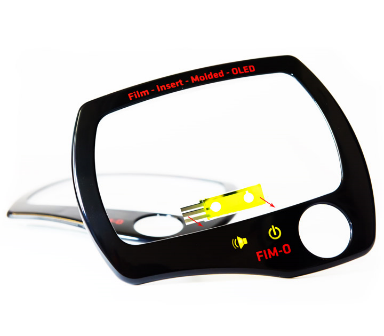 3D formed hard coat film is rear-injected. In just one operation the result is a self-luminous, foil decorated plastic part with integrated OLED illumination.
3D formed hard coat film is rear-injected. In just one operation the result is a self-luminous, foil decorated plastic part with integrated OLED illumination.
Another is the e-bee driver interface of the Visteon concept car in a „seamless design “with closed surfaces, molded edges and a „secret-til-lit-effect “is replacing the conventional automotive cockpit with switches and buttons.
As a development partner for the driver interfaces, BÖ-LA has  developed a high-quality, film-insert-molded display cover which is subsequently connected with a multi-touch display using the „optical bonding process “and joined together to create an FIM touch- screen.
developed a high-quality, film-insert-molded display cover which is subsequently connected with a multi-touch display using the „optical bonding process “and joined together to create an FIM touch- screen.
Another is the interior lighting concept from Visteon. The e-Bee concept explores further the challenges brought in 2020 by new modes of ownership and more diverse usage patterns in passenger cars.


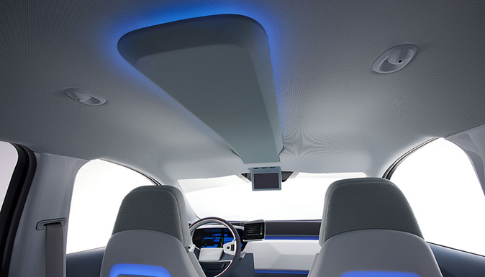

Hi there, You have done a great job. I’ll definitely digg it and in my view recommend to my friends. I am sure they’ll be benefited from this site.